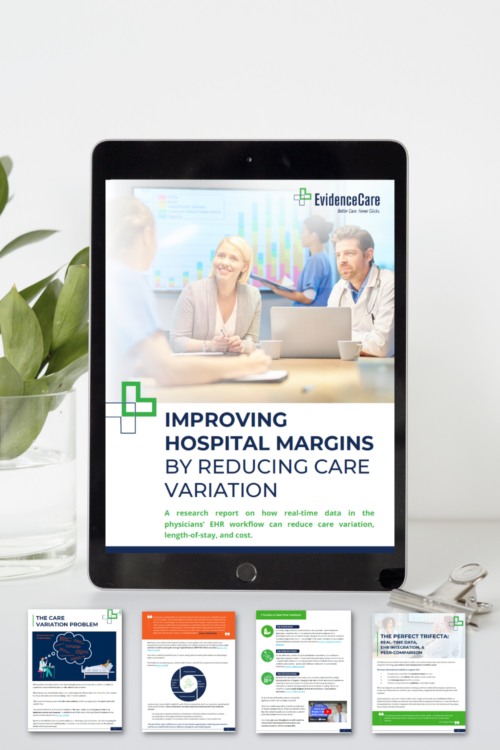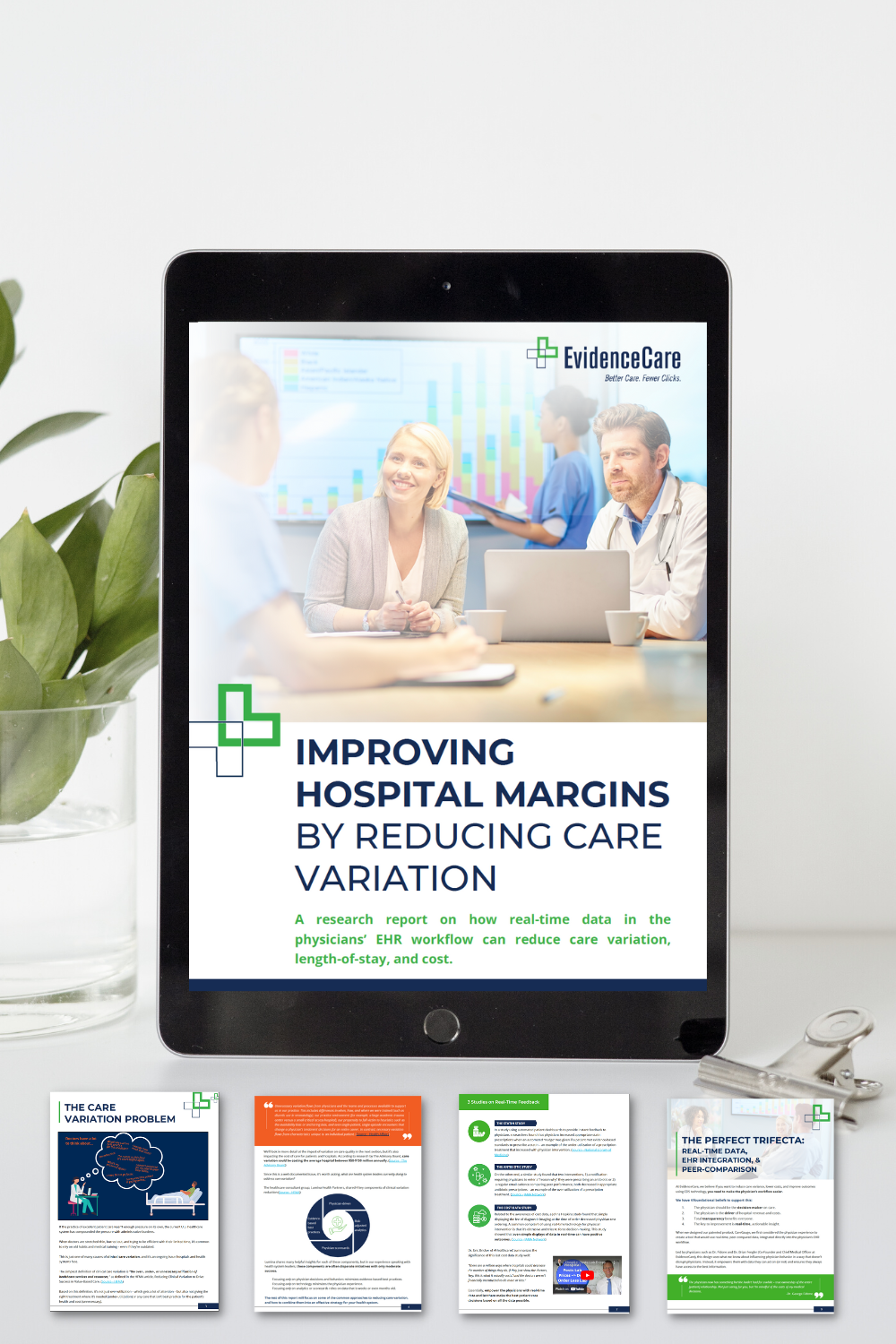
If the practice of excellent patient care wasn’t enough pressure on its own, the current U.S. healthcare system has compounded the pressure with administrative burdens on clinicians and shrinking operating margins.
To help provide innovative insight and best practices on these issues, we recently published a research report – Improving Hospital Margins by Reducing Care Variation – on how real-time data in the physicians’ EHR workflow can reduce care variation, length-of-stay, and cost.
You can download the full report by filling out this form, but we’ve also included a brief excerpt below the form.
When doctors are stretched thin, burned out, and trying to be efficient with their limited time, it’s common to rely on old habits and medical training – even if they’re outdated.
This is just one of many causes of clinical care variation, and it’s an ongoing issue hospitals and health systems face. The simplest definition of clinical care variation is “the over-, under-, or unnecessary utilization of healthcare services and resources,” as defined in the HFMA article, Reducing Clinical Variation to Drive Success in Value-Based Care. Based on this definition, it’s not just over-utilization – which gets a lot of attention – but also not giving the right treatment where it’s needed (under-utilization) or any care that isn’t best practice for the patient’s health and cost (unnecessary).
Unnecessary variation flows from physicians and the teams and processes available to support us in our practice. This includes differences in when, how, and where we were trained (such as diuretic use in neonatology), our practice environment (for example, a large academic trauma center versus a small critical access hospital), our propensity to fall victim to heuristics such as the availability bias or anchoring bias, and even single-patient, single-episode encounters that change a physician’s treatment decisions for an entire career. In contrast, necessary variation flows from characteristics unique to an individual patient. (Health Affairs)
We’ll look in more detail at the impact of variation on care quality in the next section, but it’s also impacting the cost of care for patients and hospitals. According to research by The Advisory Board, care variation could be costing the average hospital between $50-$150 million annually.
Since this is a well-documented issue, it’s worth asking, what are health system leaders currently doing to address care variation? The healthcare consultant group, Lumina Health Partners, shared 4 key components of clinical variation reduction:
- Evidence-based best practices
- Physician-driven
- Risk-adjusted analytics
- Physician scorecards
Lumina shares many helpful insights for each of these components, but in our experience speaking with health system leaders, these components are often disparate initiatives with only moderate success.
Focusing only on physician decisions and behaviors minimizes evidence-based best practices.
Focusing only on technology minimizes the physician experience.
Focusing only on analytics or scorecards relies on data that is weeks or even months old.
Opponents of trying to “overly reduce” the cost of care might argue that patient care will suffer because of cost reduction. But many studies show the opposite is true. Lower costs may actually lead to higher quality. In fact, the United States spends the largest percentage of its GDP on health care and has among the lowest LEABs (life expectancy at birth), indicating a high cost, low quality issue.
The rest of this report will focus on some of the common approaches to reducing care variation, and how to combine them into an effective strategy for your health system.
Download the full research report here to continue reading…
EvidenceCare’s software, CareGauge, presents zero-click insights into care utilization and cost information to give physicians a real-time view of how their care decisions for a particular patient compare to locally benchmarked patients with that same condition. Schedule a demo today to learn more.









